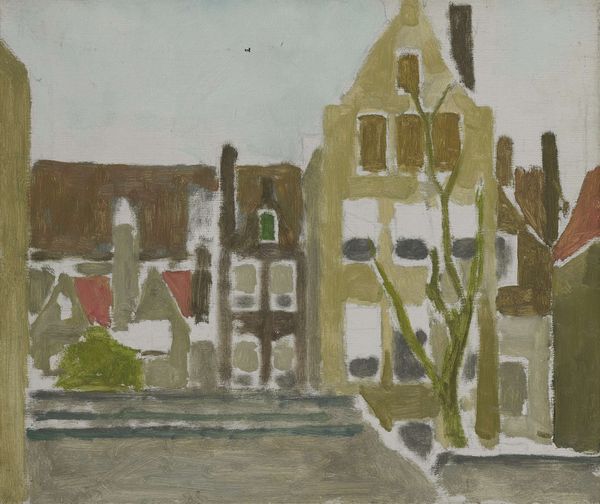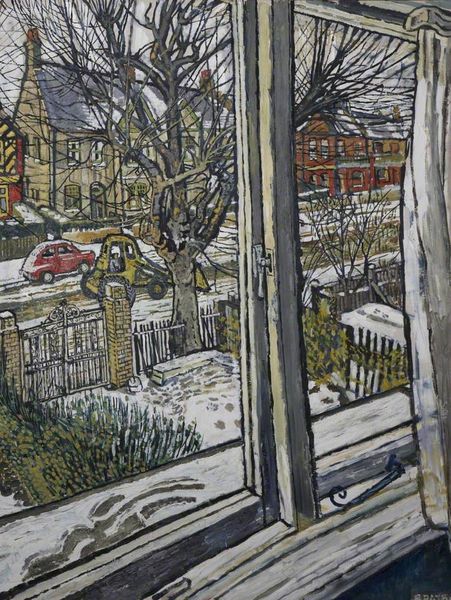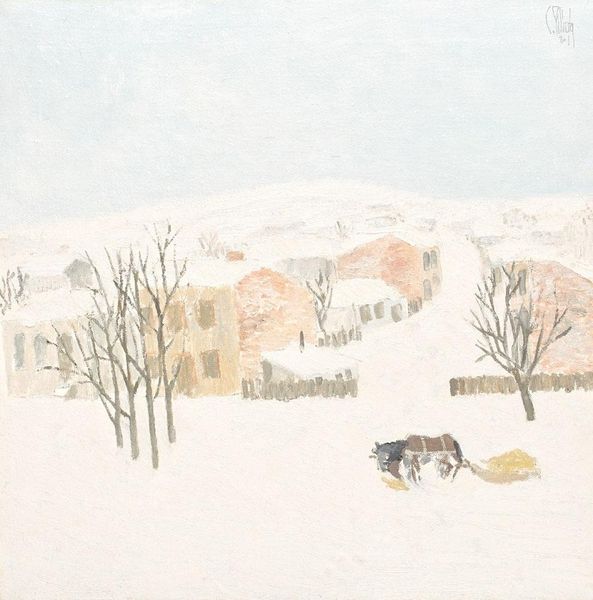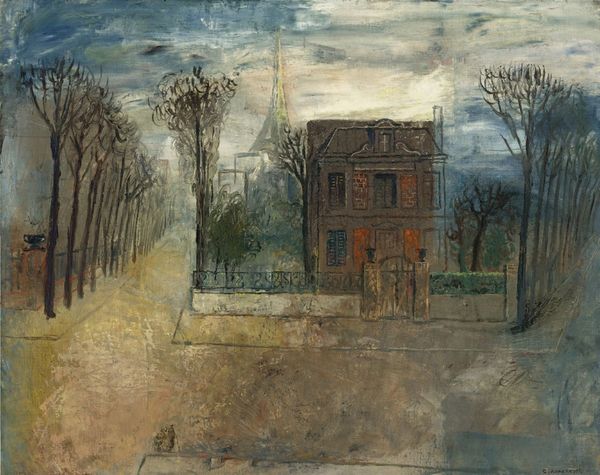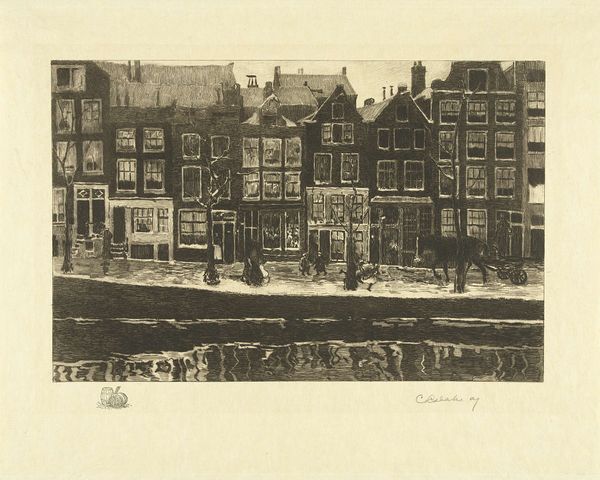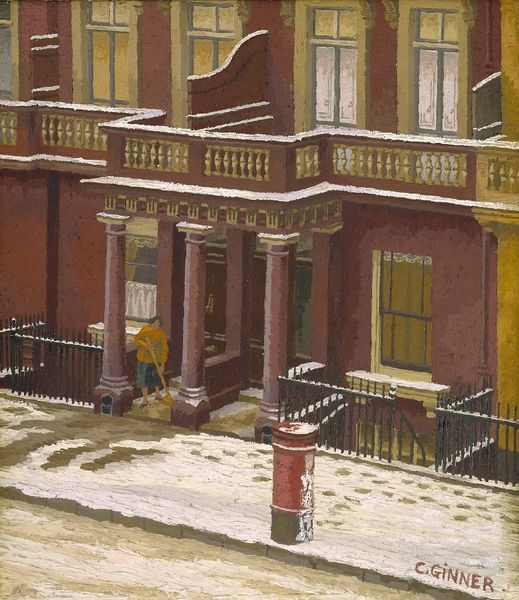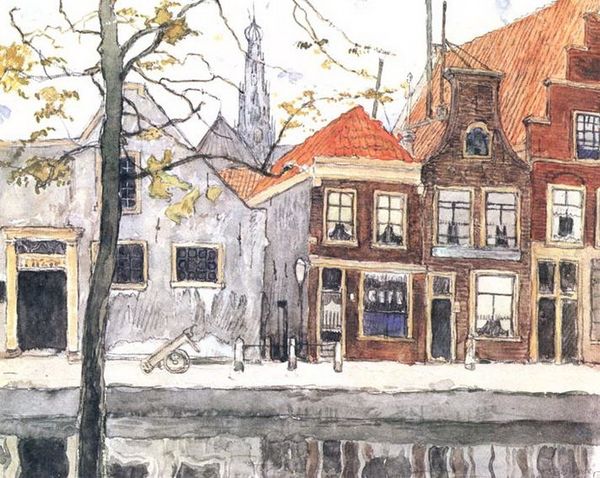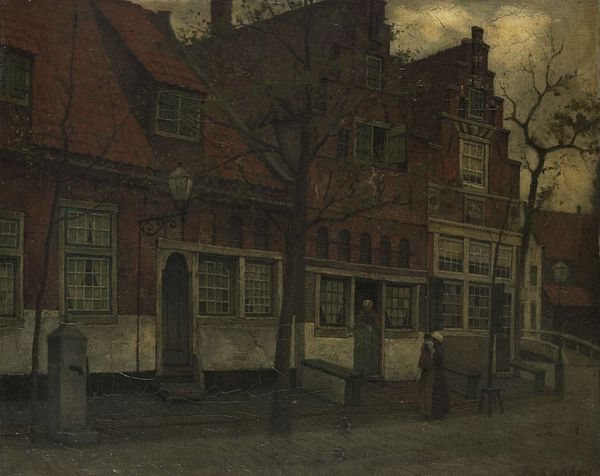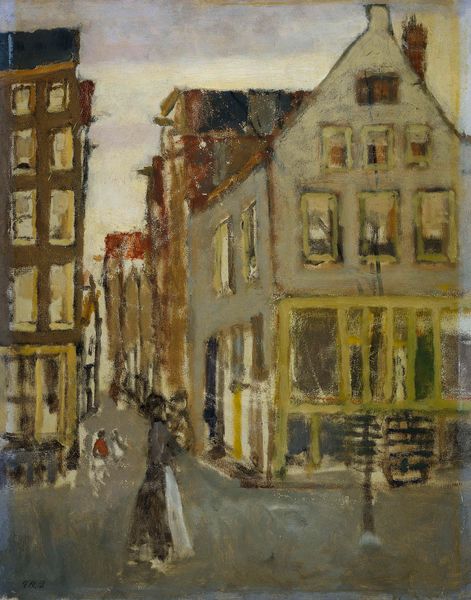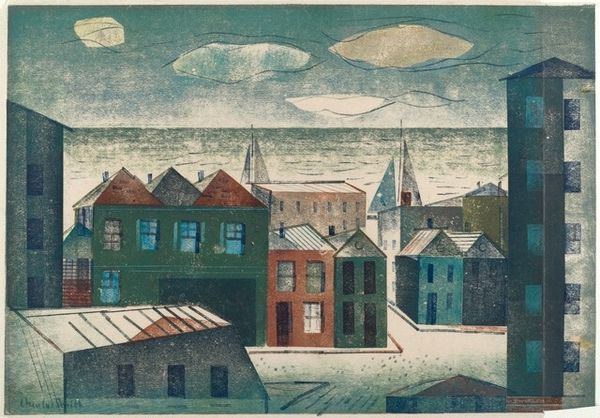
Dimensions: height 538 mm, width 650 mm
Copyright: Rijks Museum: Open Domain
Curator: Editor: This watercolor by Willem Witsen, titled "De Kromboomsloot te Amsterdam," painted sometime between 1870 and 1919, has a quiet, almost melancholic feel. What do you see in this piece? Curator: It's a powerful depiction of urban life, isn’t it? Beyond the surface, I see commentary on class and visibility. Notice the figures partially obscured, the woman in the doorway, another in the window, framed but separated. How do these visual barriers reflect social realities? Editor: I hadn’t thought about it that way. They seem almost trapped by the architecture. Curator: Precisely. The buildings aren't just background; they're actively shaping the inhabitants' lives and dictating their interactions, or lack thereof. Consider, too, the role of public versus private space in 19th-century Amsterdam. Where does one's identity reside? Editor: I suppose at that time, class dictated access to privacy in the domestic space? The composition does create an opposition between the architecture and the inhabitants’ experience of it. Curator: Indeed. Witsen prompts us to examine how power structures permeate the most intimate aspects of life. What about the animal figures: what role do they play here? Editor: I suppose the seagulls and dog offer more freedom? A break from the architecture perhaps. Curator: That’s it. The birds are outside the physical constrictions placed on humans in the scene. Editor: Seeing the figures this way definitely shifts my understanding of the work. Curator: These shifts are key to engaging with the artwork. There is a narrative weaved between public and private that echoes still today.
Comments
No comments
Be the first to comment and join the conversation on the ultimate creative platform.

